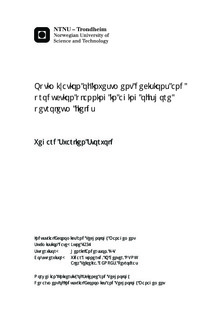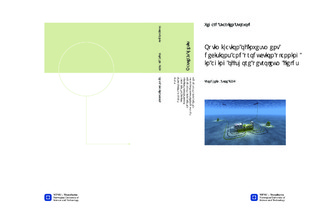| dc.contributor.advisor | Andersson, Henrik | nb_NO |
| dc.contributor.advisor | Gunnerud, Vidar | nb_NO |
| dc.contributor.advisor | Teixeira, Alex | nb_NO |
| dc.contributor.author | Storvold, Vegard Svarlien | nb_NO |
| dc.date.accessioned | 2014-12-19T14:28:27Z | |
| dc.date.available | 2014-12-19T14:28:27Z | |
| dc.date.created | 2013-06-09 | nb_NO |
| dc.date.issued | 2012 | nb_NO |
| dc.identifier | 626516 | nb_NO |
| dc.identifier | ntnudaim:7328 | nb_NO |
| dc.identifier.uri | http://hdl.handle.net/11250/266220 | |
| dc.description.abstract | This thesis suggests that an optimization model can be used as decision support when different subsea solutions are evaluated in order to increase hydrocarbon recovery and production lifetime of a field. The Marlim field in Campos Basin outside the coast of Brazil is used as a case, which is a field described as an aging field with increasing water production and declining profitability. The objective for the model is to maximize the net present value of a production asset by evaluating the installation of subsea boosters, subsea water separators and alternative routing solutions. The case consists of a well cluster of four wells that is routed through a subsea manifold connected to a FPSO through a riser. This case is similar to many of the production assets in the Marlim field, making the model applicable on other cases in the field as well. To solve this problem, a mixed integer linear program is developed. The nonlinear functions are approximated with piecewise linearization by a SOS2 formulation, where the set of breakpoints are generated in a multiphase flow simulator. Binary variables with time period indexes are introduced to say what type of technology should be installed, and when it should be installed. The time horizon in the model is ten years with a yearly resolution. The problem turns out to be quite challenging to solve if the detail level in the linear approximations and the time periods becomes too high. The problem is however solved nicely for a detail level found to be sufficient to provide useful results. The model suggest that there is a large potential for improving an asset’s NPV by installing new subsea processing equipment for enhanced production. The improvement consists of increased production and better usage of today’s infrastructure and topside installations, as well as increased system flexibility to mitigate uncertainty. | nb_NO |
| dc.language | eng | nb_NO |
| dc.publisher | Institutt for industriell økonomi og teknologiledelse | nb_NO |
| dc.title | Optimization of investment decisions and production planning in aging offshore petroleum fields | nb_NO |
| dc.type | Master thesis | nb_NO |
| dc.source.pagenumber | 93 | nb_NO |
| dc.contributor.department | Norges teknisk-naturvitenskapelige universitet, Fakultet for samfunnsvitenskap og teknologiledelse, Institutt for industriell økonomi og teknologiledelse | nb_NO |

